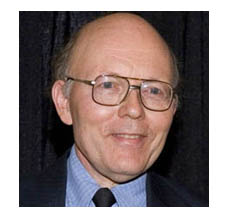
GS: I hesitate to name names, as the omissions would be many and unjustified. Obviously, my first design lessons were learned from radio designers that I would never meet. It has been aptly said that “Pygmies standing on the shoulders of giants can see further than the giants themselves.”
Some of those giants can only be met through books – Black, Bode & Nyquist – while others, like Dick Heyser, were friends.
KC: How did Crown come to evolve from a respected manufacturer of tape recorders into its current status as a world leader in power amplifiers and affiliated products, microphones, and now, DSP?
GS: As mentioned previously, the first Crown power amplifiers were accessories to the tape recorders. Over a period of time, the accessories outsold the original products.
Each audio product added to the Crown line has brought a unique value to the customer and acted to support the remaining products. The incorporation of digital signal processing is a natural for adding value to most signal processing products and power amplifier systems are no exception.
KC: How many patents are you responsible for at Crown, and what are several of the most noteworthy ones in your opinion?
GS: If one counts foreign issues, I’ve lost track. I believe the U.S. Patent count is now at 21 issued. The most noteworthy would be the opposed-current converter, the grounded-bridge amplifier and junction temperature simulation.
The latter two have expired due to age. The second is now the pinnacle of one major competitor’s product line, while here, it’s our old technology.
KC: What are your favorite Crown products over the years, and why?
GS: I’ve enjoyed a lot of the products and hesitate to pick a favorite. It’s like picking favorites amongst your kids.
KC: What product was developed that you were sure would be a hit, but somehow, it just didn’t take off?
GS: There have been products that didn’t take off, but then they weren’t my favorites either. Does anyone remember the OC-150? (This was an “output control console.”)
KC: How has Crown’s approach to designing products changed over the years that you’ve been with the company?
GS: The largest change has been the use of computing tools to analyze designs before ever making hardware. This change has been delightful as designs can now be considered that would have been intractable by earlier manual methods.
Since I’m a programmer (since college days) who has been writing circuit simulators and solving assorted problems using numeric methods, it’s been fun.
KC: Any big changes since the Harman acquisition?
